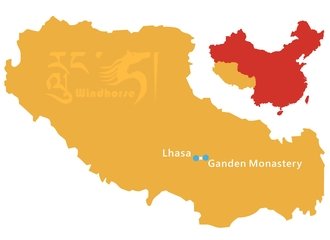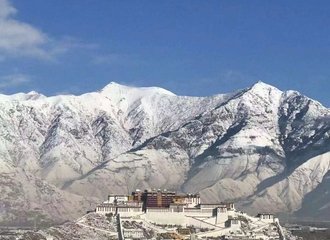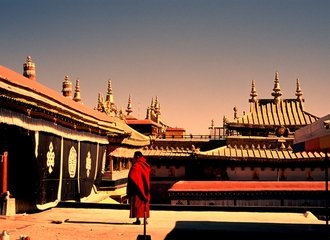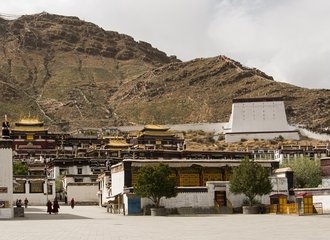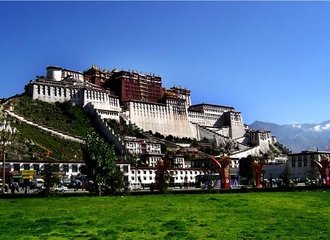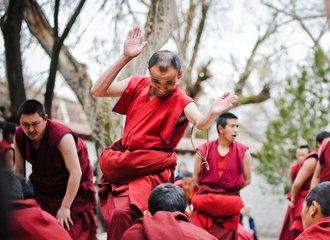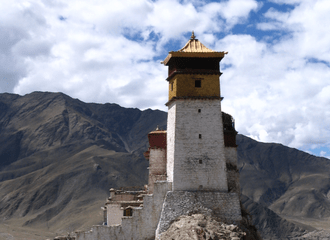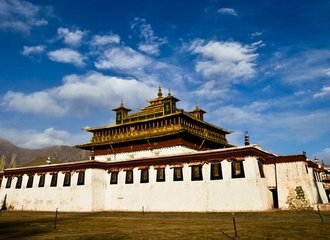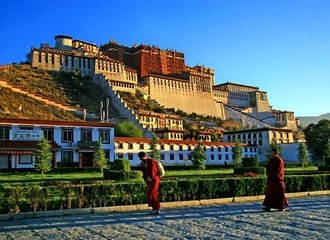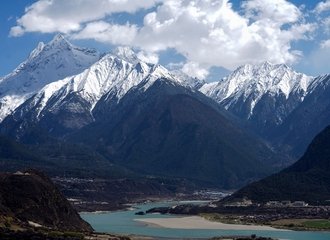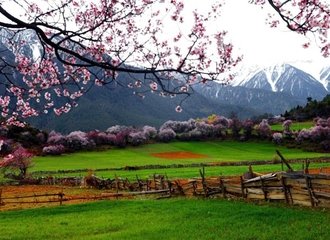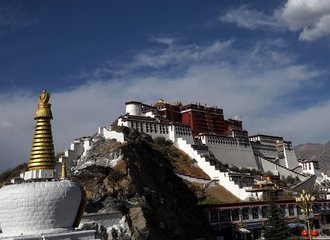Top 30 Attractions in China - Travel China Guide
When discussing China, iconic images such as the Great Wall and Forbidden City of Beijing, the Terracotta Warriors of Xi'an, the enchanting karst mountains of Guilin, and the majestic Yangtze River Cruise often come to mind. Yet, these renowned sites barely scratch the surface of what this remarkable country has to offer. With its rich tapestry of history, culture, and vast landscapes, China is home to an incredible wealth of tourism resources, boasting over 30,000 tourist attractions that span millennia, from ancient cultural relics to breathtaking natural wonders and the vibrancy of modern developments.
We are excited to introduce you to the famed attractions of China, aiming to bring you closer to the heart of this diverse and unique country. Our curated list includes not just the remnants of its glorious past, with relics and monuments that have stood the test of thousands of years, but also the unparalleled natural beauty that shapes its landscapes, and the dynamic architecture of new China. By the time you've explored our top 30 attractions in China, you'll have a comprehensive understanding of the must-visit destinations for your China tour, truly capturing the essence of this captivating country.

1. China Great Wall in Beijing

The Great Wallis a military fortification in ancient China, featuring a tall, sturdy, and continuous wall designed to limit the movement of enemy riders. It is a World Cultural Heritage site and one of the Seven Wonders of the World. The Great Wall spans 15 provinces, regions, and cities, including Hebei, Beijing, Shaanxi, Gansu, Inner Mongolia, and others. Many well-preserved sections worth visiting are located in Beijing, such as Mutianyu, Jinshanling, Simatai, and more. For more details, please refer to the Great Wall travel guide.

2. Forbidden City in Beijing - World Heritage
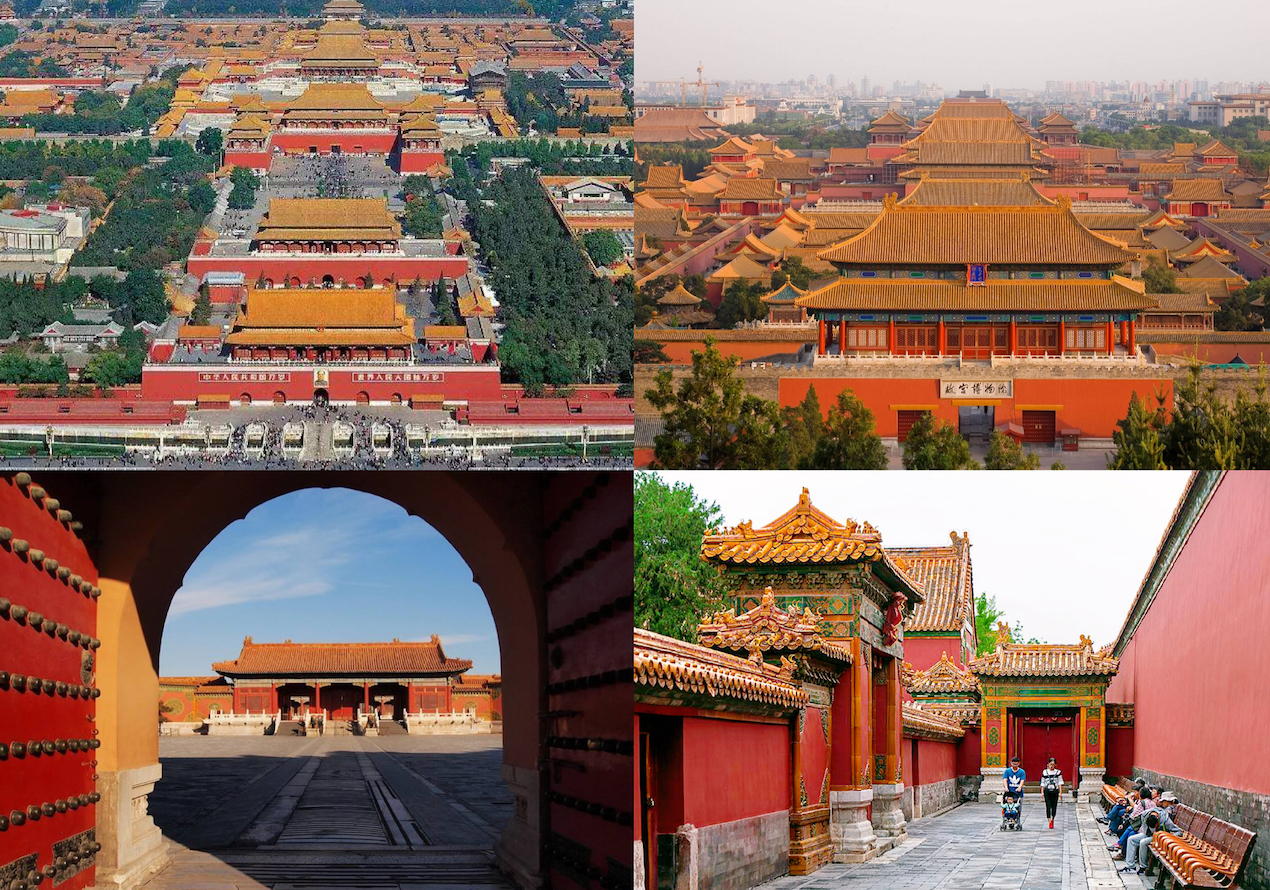
The Forbidden City in Beijing was the imperial palace of the Ming and Qing Dynasties in China. It is centered around three main halls and covers an area of 720,000 square meters, with a construction area of about 150,000 square meters. The complex includes more than 70 palaces of varying sizes and over 9,000 rooms. It is surrounded by a 10-meter-high wall on all sides and a 52-meter-wide moat outside the city. The architectural style of the Forbidden City is magnificent, symbolizing the supremacy of the feudal regime.
The Forbidden City is one of the largest and best-preserved ancient wooden structures in the world. It houses a large number of precious cultural relics; according to statistics, there are a total of 1,862,690 items, including bronzes, porcelain, jewelry, paintings, calligraphy works, and other ancient art treasures.
Check out our Beijing tour packages that include a visit to the Forbidden City.

3. Summer Palace in Beijing - World Heritage
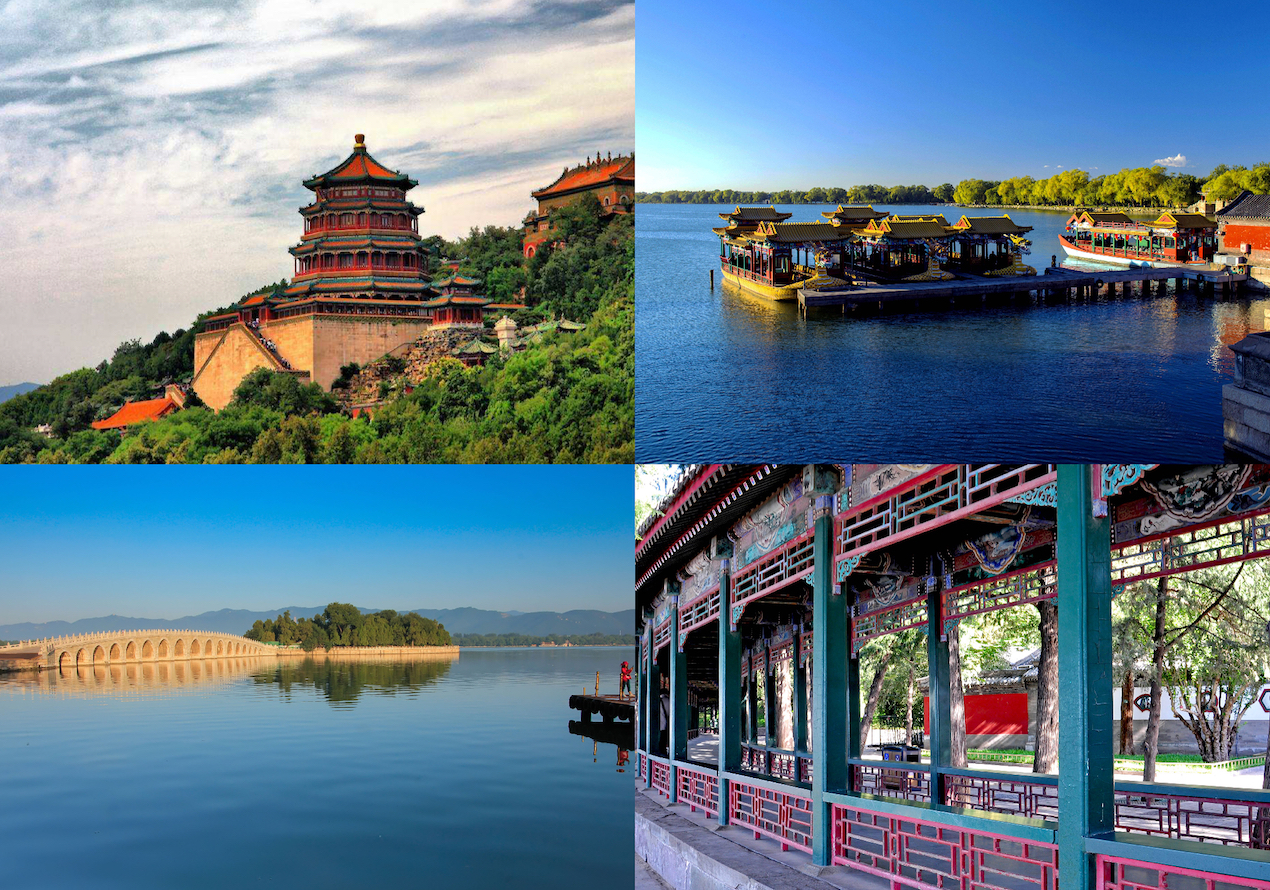
The Summer Palace, a royal garden from the Qing Dynasty in China, covers an area of about 290 hectares. The architectural complex harmoniously integrates with the surrounding mountains and lakes, offering endlessly changing scenery. It is the most well-preserved imperial palace and royal garden, having been included in the "World Heritage List" in 1998.
Today, its vast size, stunning scenery, and numerous historical relics make the Summer Palace extremely popular among Beijing's local residents. Daily, elderly individuals visit for walks and exercise. On weekends, parents often bring their children here for outings.

4. Temple of Heaven in Beijing - World Heritage
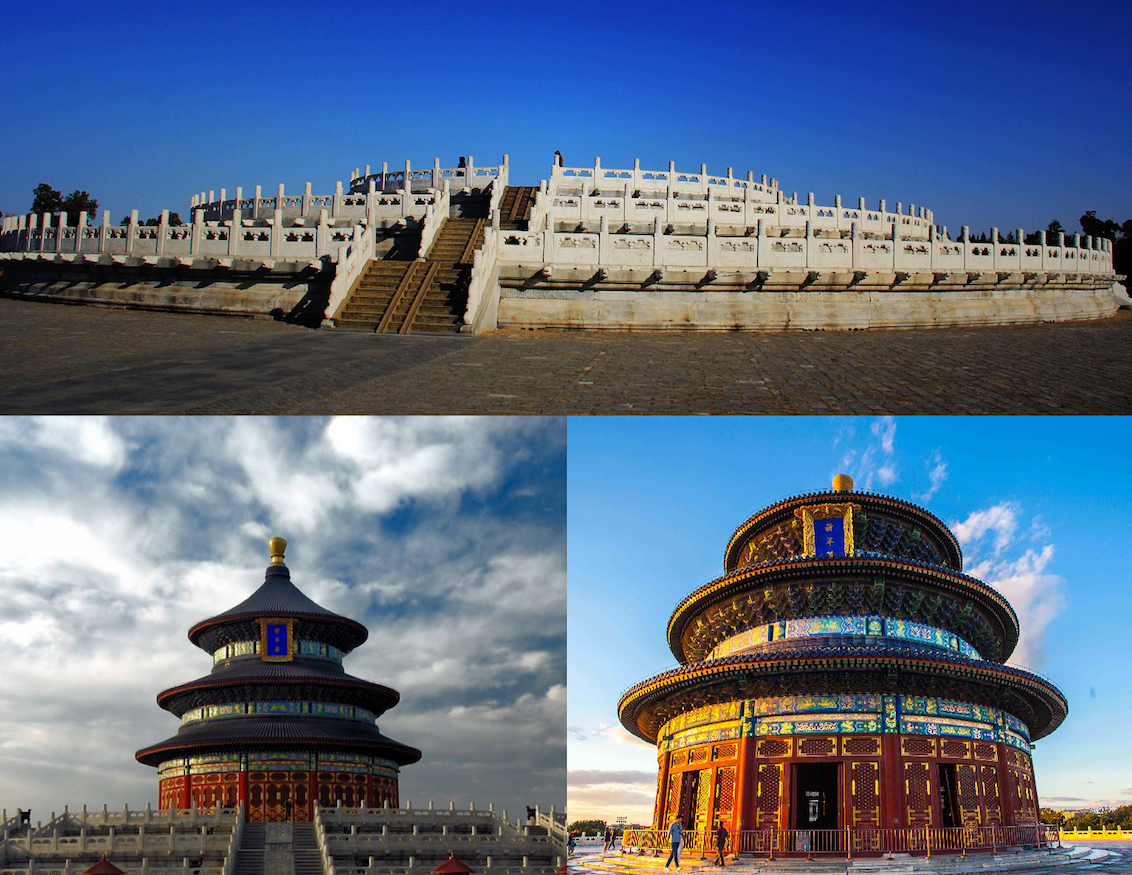
The Temple of Heaven, an esteemed site where emperors of the Ming and Qing Dynasties performed ceremonies to worship the gods of heaven and earth, stands as a testament to their prayers for bountiful harvests. Its meticulous architectural layout, unique structural design, and splendid decorations rank it among the most exquisite and beautiful collections of ancient buildings in China.
Every aspect, from the overall arrangement to each individual structure, embodies the profound relationship between heaven and earth — symbolizing the connection between humans and the divine. This symbolic interaction held a pivotal role in ancient Chinese cosmology, reflecting the cosmic order and the emperor's place within it as the mediator between the heavens and his people. The Temple of Heaven is not just an architectural marvel but also a cultural symbol, encapsulating the philosophical and spiritual depth of Chinese civilization and its reverence for harmony between nature, humanity, and the cosmos.

5. Datong Yungang Grottoes - World Heritage
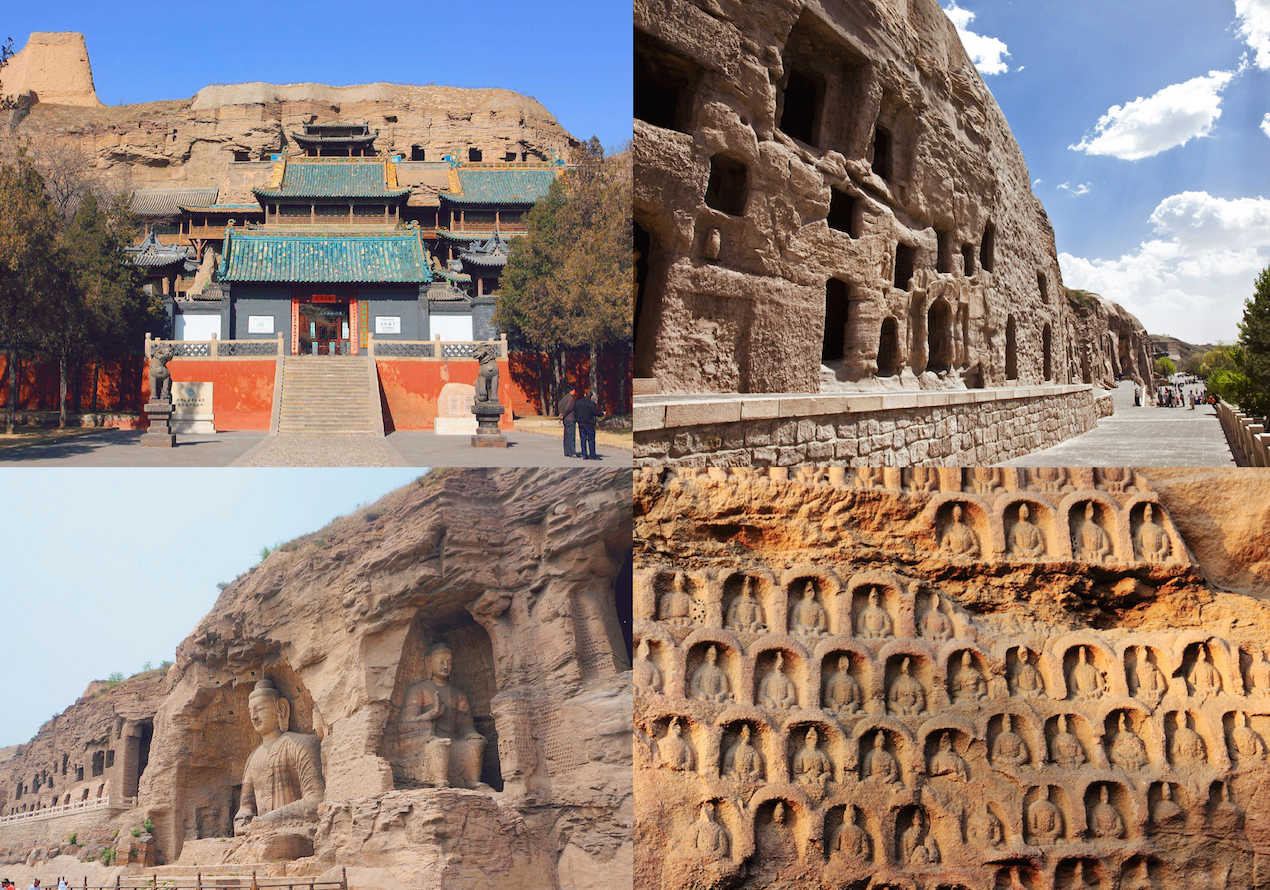
The Yungang Grottoes boast 45 main grottoes, 252 grottoes of various sizes, and more than 51,000 stone statues, making it one of the largest ancient grotto groups in China. They vividly record the evolution of Buddhist art from India and Central Asia to Chinese Buddhist art, reflecting the gradual secularization and nationalization of Buddhist statues in China.
The excavation of the Yungang Grottoes spanned more than 60 years, from AD 460 to AD 524. Over 1,500 years, the grottoes have experienced changes in geological and environmental conditions, natural weathering, and human destruction, leading to varying degrees of damage to the caves and statues. In recent decades, the Yungang Grottoes have undergone numerous restorations, ensuring that the caves are now adequately protected.
Check out our Datong & Pingyao tour packages that include a visit to the Yungang Grottoes.

6. Pingyao Ancient Town - World Heritage

Pingyao Ancient City, located in the central part of Shanxi Province, was established between 827 and 782 BC, with expansions beginning in 1370. Boasting a history of more than 2,700 years, it retains the basic style and features of the county during the Ming and Qing Dynasties, making it the most complete ancient city still existing in China.
Pingyao ancient city's network is comprised of four main streets, eight smaller streets, and 72 alleys, crisscrossing through the city. It hosts a variety of shops, including restaurants, clothing stores, musical instrument shops, cafes, bars, and inns. Pingyao stands as a city where history and modernity coexist, where the classic and the modern blend harmoniously.

7. Xi'an Terracotta Warriors Museum - World Heritage

The Terracotta Warriors are located in a pit 1.5 kilometers east of the Mausoleum of Qin Shihuang in Xi'an, and were discovered in March 1974. They have been hailed as "the eighth wonder of the world."
Terracotta Warriors and Horses represent a category of ancient tomb sculptures. In ancient times, slaves were to be killed and buried as burial objects after the death of their owner. However, during 770-221 BC, terracotta figures (made of clay and wood) were used as substitutes for human sacrifices in tombs.
This site is the largest ancient military museum in China, featuring 3 pits of terracotta warriors and horses. Pit No. 1 is the main phalanx of chariots and infantry. Pit No. 2 consists of chariots, cavalry, and crossbowmen. Pit No. 3 serves as the command center of the military formation.
Check out our Xi'an tour packages that include a visit to the Terracotta Warriors.

8. Xi'an City Wall
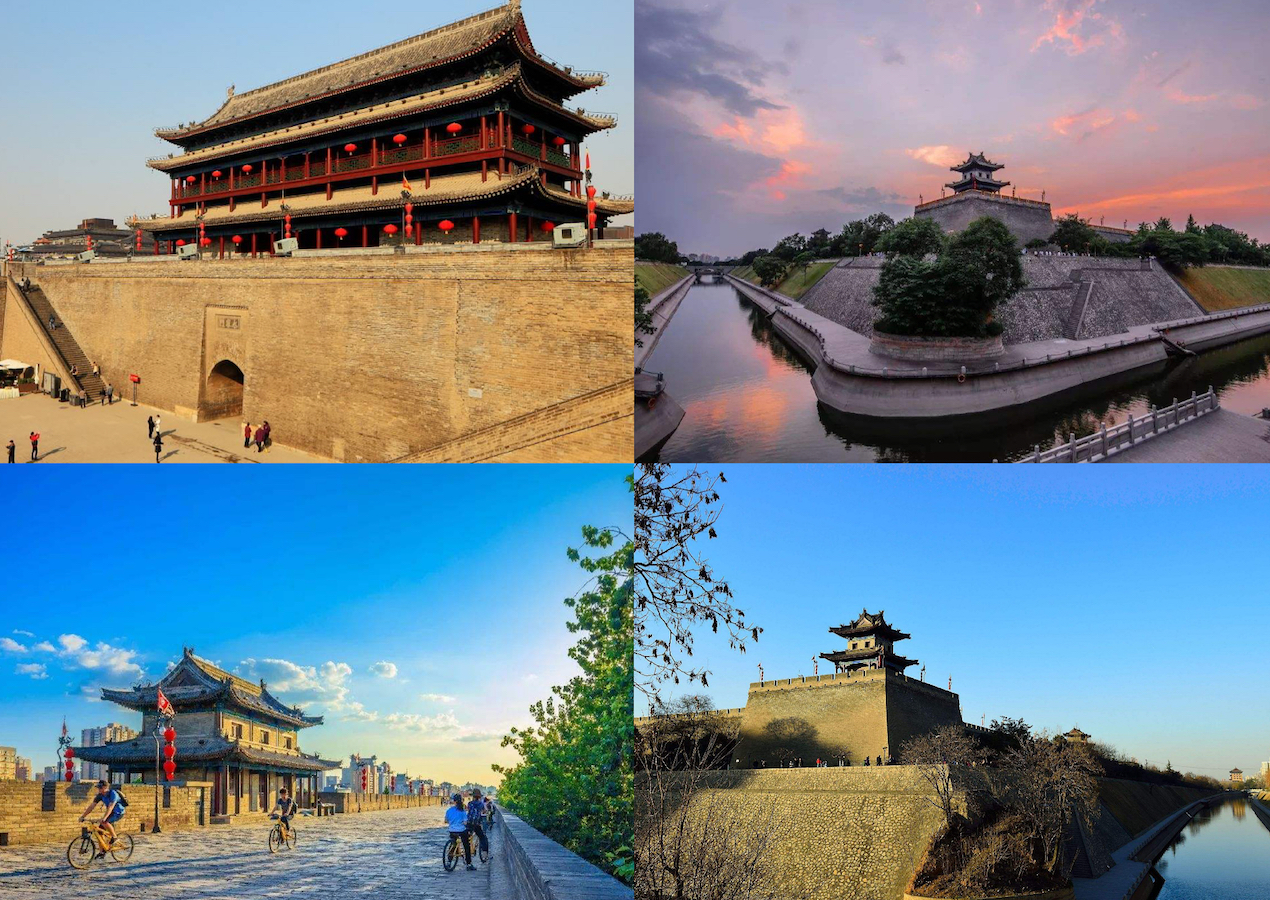
The Xi'an City Wall was built between 1374-1378, expanded on the foundation of the imperial city of Chang'an from the Tang Dynasty and Fengyuan City from the Yuan Dynasty, with a total circumference of 11.9 kilometers. It is the most intact ancient city wall building in China.
The city wall of Xi'an includes a series of military installations such as moats, suspension bridges, gate towers, arrow towers, main towers, turrets, etc., forming a complete military defense system.
Visitors can choose to take a stroll or ride a bicycle around the city wall. The road on the city wall is not smooth, so please pay attention to safety when riding.

9. Chengdu Research Base of Giant Panda Breeding
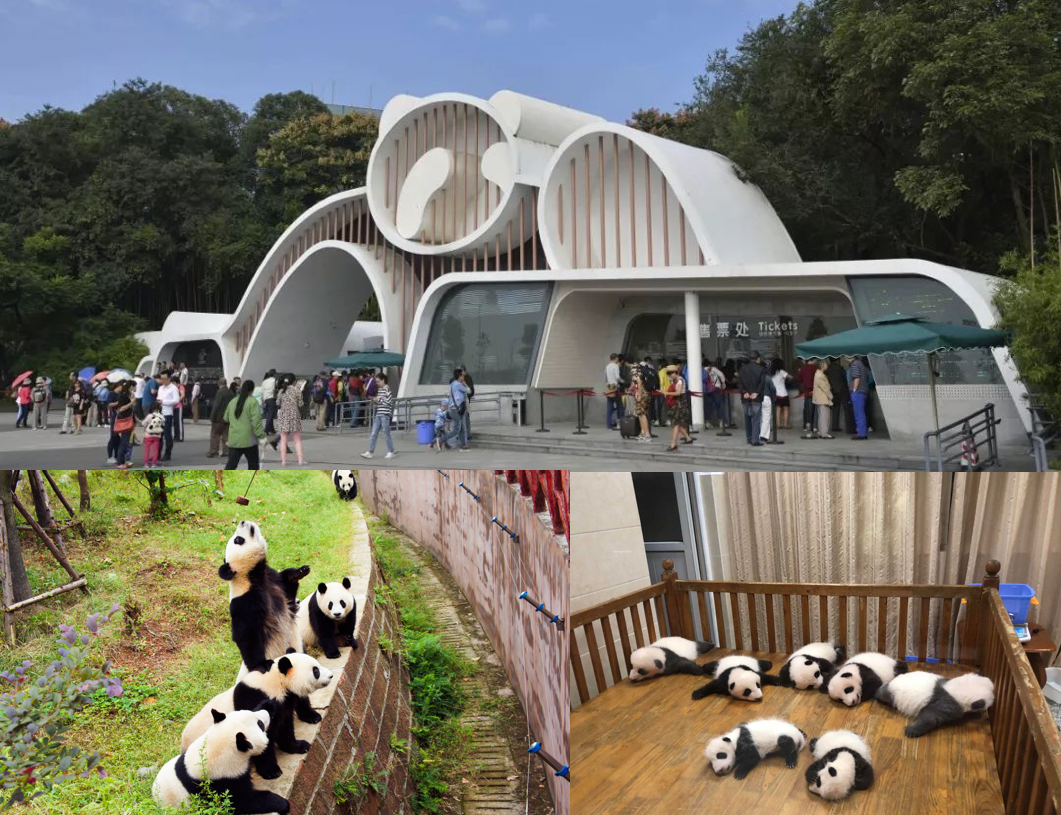
Chengdu Research Base of Giant Panda Breeding is a well-known conservation and research institution for giant pandas and other rare and endangered wild animals in China and around the world. It integrates giant panda scientific research and breeding, conservation education, educational tourism, and panda culture construction.
The wild-living environment for giant pandas is completely simulated here, with lakes, streams, bamboo forests, lawns, and more. There are more than 100 pandas in captivity, of all ages. In addition to the giant panda, you can also see the black-necked crane, peacock, red panda, and other species. There are two special delivery rooms for the cutest panda babies.
Check out our Panda volunteering tour packages for a unique experience of serving as a keeper for these precious animals.

10. Yangtze River Cruise
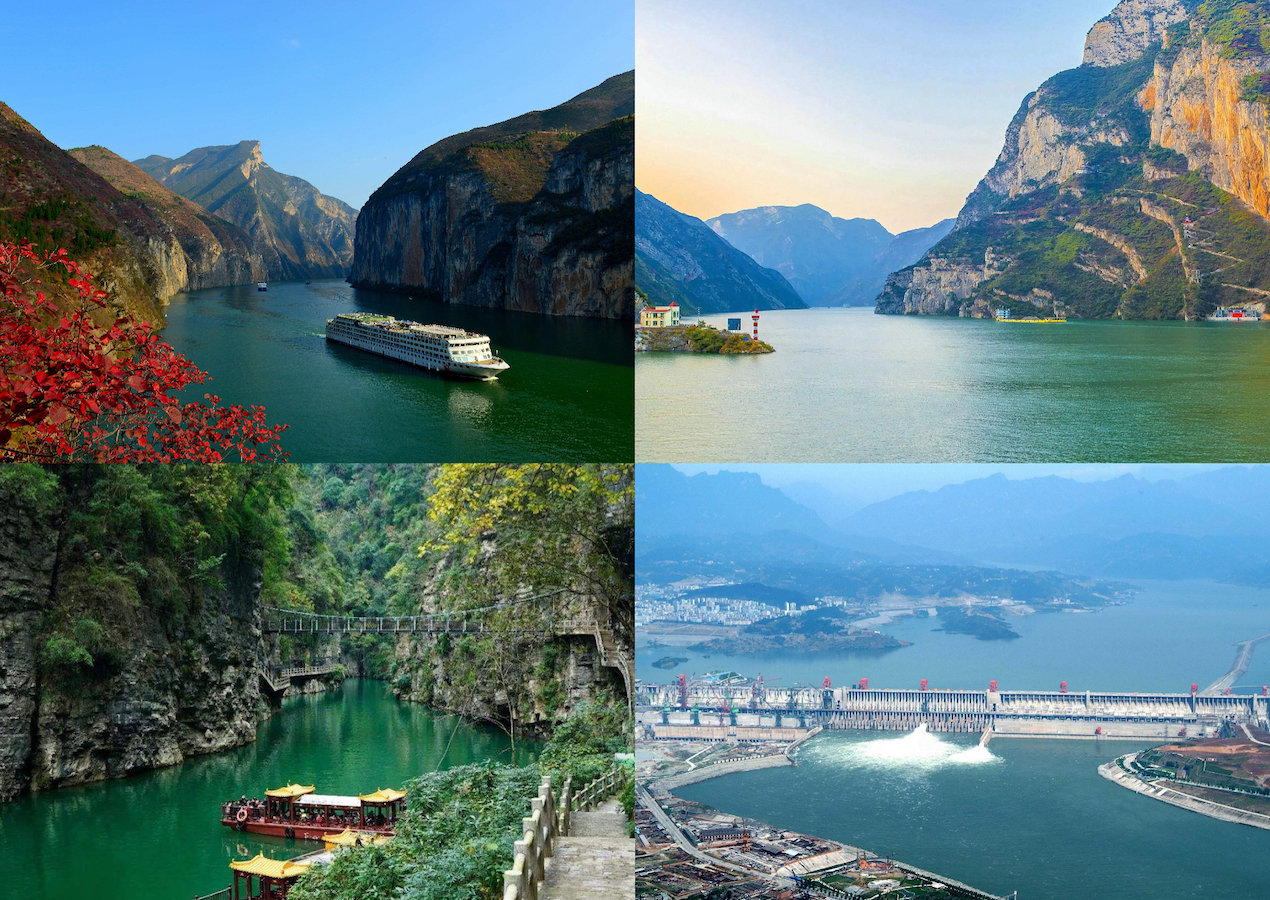
The Yangtze River originates from the "Roof of the World"—the southwest side of Geladandong Peak in the Tanggula Mountains on the Qinghai-Tibet Plateau. The main stream flows through 11 regions including Qinghai, Tibet, Chongqing, Hubei, and Shanghai, among others. With a total length of 6,387 kilometers, it is the third-longest river in the world. The section from Chongqing to Hubei is the most spectacular part of the Yangtze River.
The best way to explore the Yangtze River is by taking a cruise. You can choose from a downstream journey from Chongqing to Yichang or an upstream voyage from Yichang to Chongqing. The cruise ships offer comfortable rooms, delicious food, a gym, swimming pool, cinema, bar, etc. Travelers will be scheduled to disembark for visits daily, with each day offering a different and interesting itinerary.
Check out our China tour packages that include a Yangtze River Cruise.

11. Guilin Li River

Li River, located in the northeast of Guangxi Zhuang Autonomous Region, flows through Xingan, Lingchuan, Guilin, Yangshuo, etc. The li River is 164 kilometers long with clear water and karst landforms on both sides. The famous landscape of Guilin lies on the Li River.
The Li River Scenic Area is the world's largest and most beautiful karst mountain and water tourist area. The Li River has four wonders: green mountains, clear waters, strange caves, gorgeous stones. Both banks of the Li River in Yangshuo are the most typical karst peak forest landforms in the world. The main ways to visit the Li River are by boat, bamboo raft, and hiking. Either way, visiting the Li River is an enjoyable experience, like walking into a painting.
Check out our Guilin & Yangshuo tour packages that include a Li River Cruise.

12. Yangshuo Countryside Hiking

Yangshuo is situated to the northeast of Guangxi, just south of Guilin City. The center of Yangshuo is approximately 65 kilometers from Guilin. A well-known Chinese saying goes, "Guilin's landscape ranks as the finest under heaven, with Yangshuo boasting the most exquisite and distinctive scenery."
Exploring beyond the bustling tourist spots, hiking through the tranquil yet stunning countryside offers a unique opportunity to experience Yangshuo and gain a deeper understanding of Chinese rural culture and customs. Walking along the rural paths, amidst intertwining landscapes, allows one to immerse in the countryside's ambiance, inhale the freshest air nature has to offer, and enjoy the scent of flowers blooming along the route.

13. Longji Rice Terraces
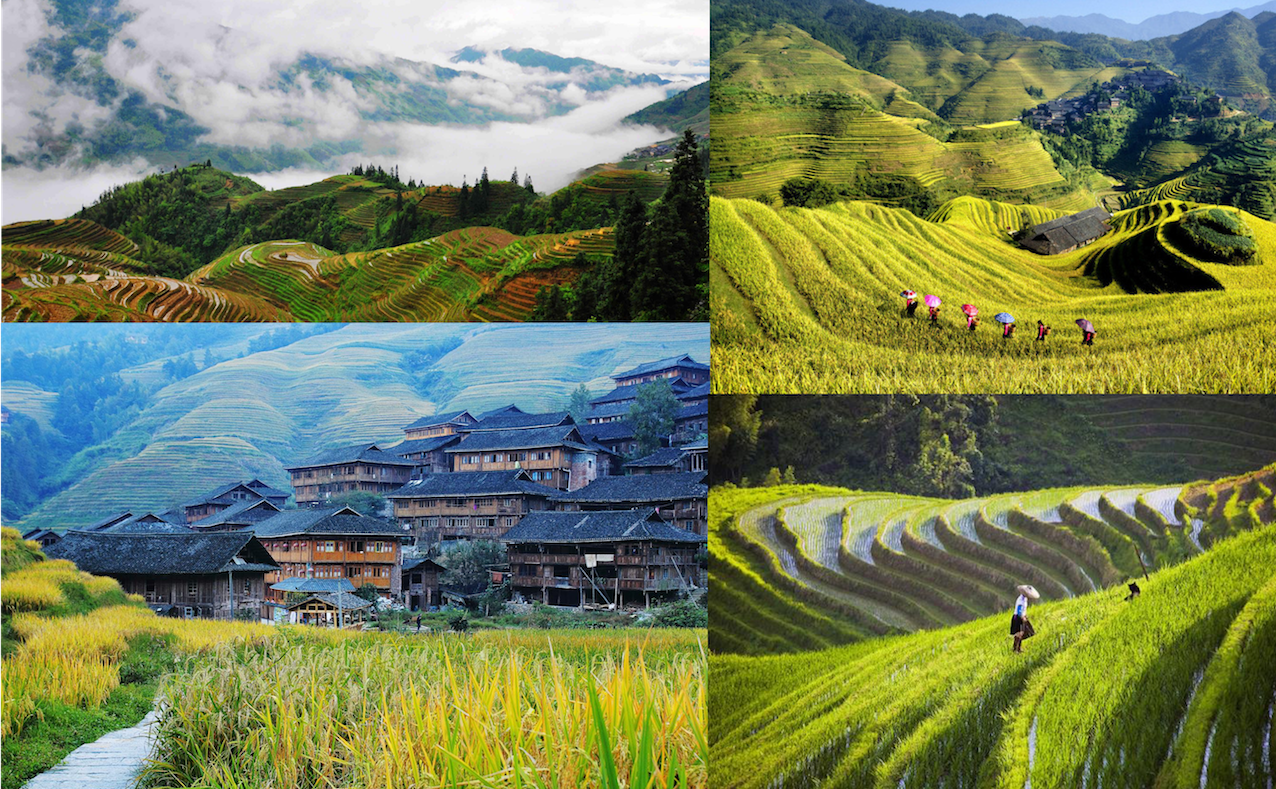
With a history of at least 2,300 years, Longji rice terrace fields are regarded as the original terraced fields in the world. It is one of the world's cradles of cultivated rice. The terraces are distributed between 300-1100 meters above sea level, with a maximum slope of 50 degrees, most roads to the terraces are winding mountain roads.
Longji Rice Terraces is so famous due to its magnificent scale, like a chain or a belt, winding from the foot of the mountain to the top of the mountain. The hills are like snails, and the mountains are like towers, layered on top of each other. The abstract curves of terraces like flowing clouds and water, chic and charming.

14. Mount Huangshan - World Heritage
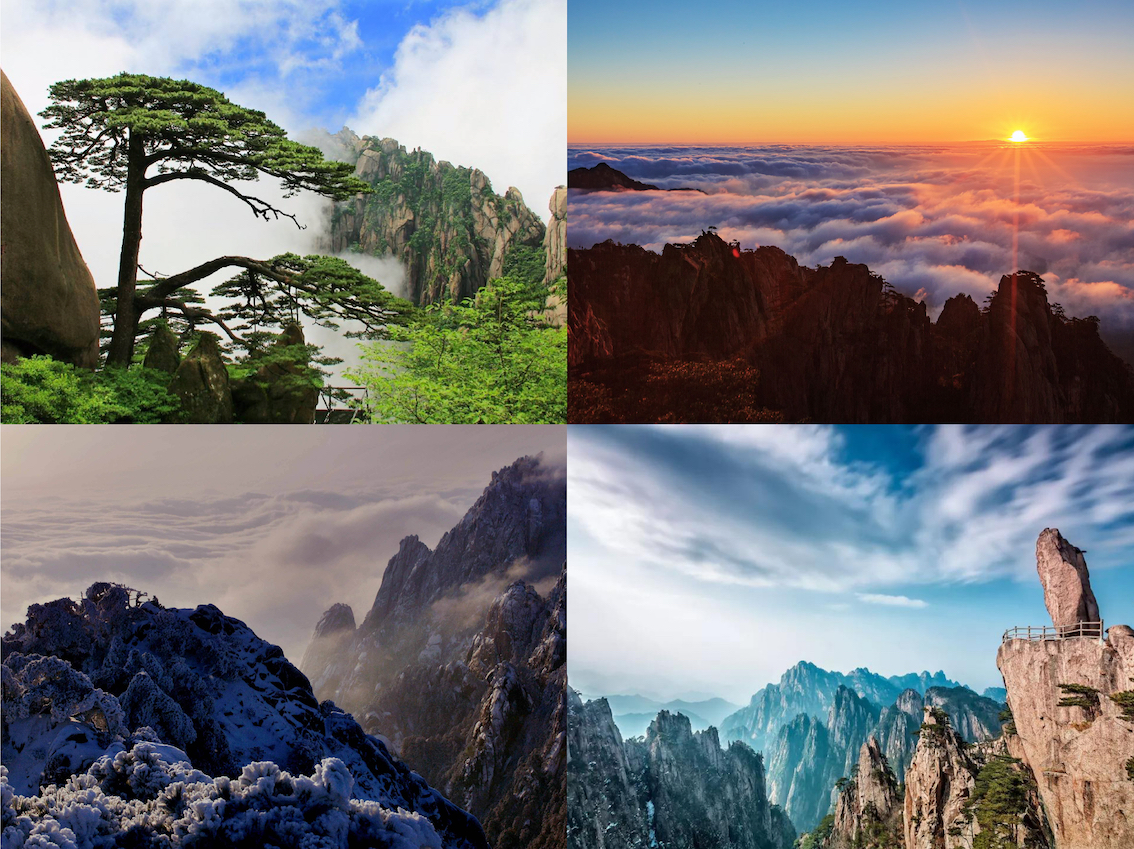
Mount Huangshan Scenic Area is adjacent to Zhejiang Province in the east and Jiangxi Province in the south, covering an area of 160.6 square kilometers. It is the watershed of the two major water systems of the Yangtze River and the Qiantang River.
Huangshan mountain is one of the top ten famous mountains in China and also a dual heritage of world culture and nature. It has 82 peaks, the main peak Lianhua is a1864.8 meters. The strange pine, strange rocks, the sea of clouds, hot springs, and winter snow here is the most beautiful scenery that people talk about. Mount Huangshan is one of the few natural scenic spots that are worth visiting all year-round.
Check out our Mount Huangshan tour packages.

15. Tongli Water Town in Suzhou

Tongli Water Town was built in the Song Dynasty, where it has many gardens, temples, mansions, and former residences that were built in the Ming and Qing dynasties. Fifteen rivers divide the town into seven islets, and 49 ancient bridges connect them into one.
Travelers can feel the excitement and joy here, as well as silence and ease. You can use your footsteps to measure every inch of the secluded stone road or watch the boats passing by on the river bank, listen and enjoy the songs... The most recommended way is to take an ancient awning boat rippling and shuttle in this water town to feel the history, culture, and folk customs here.
Check out our Shanghai tour packages that include the visit to Tongli Water Town.

16. Suzhou Classical Gardens - World Heritage
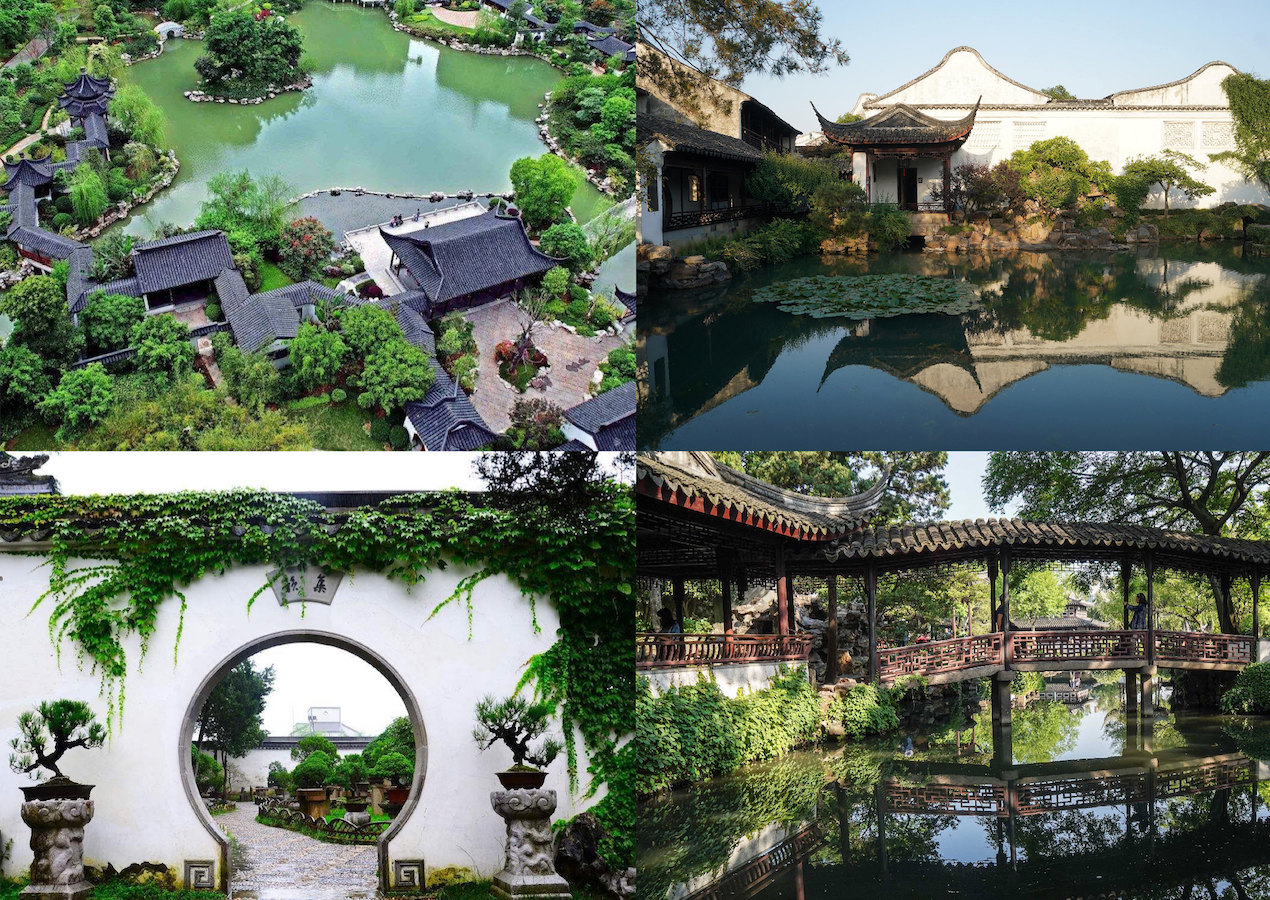
Suzhou Classical Gardens, also known as "Suzhou Gardens", is the general name of Chinese classical gardens located in Suzhou City. At the end of the Qing Dynasty, there were more than 170 gardens inside and outside Suzhou, with more than 50 existing.
The formation of Suzhou Classical Gardens is a creation of human beings attached to nature, seeking harmony with nature, beautifying and perfecting their own living environment in densely populated, and lacking natural scenery. The Chinese philosophy, history, humanities, and customs contained in Suzhou classical gardens are a symbol and condensate of the humanities, historical traditions, and local customs in the south of the Yangtze River.

17. Hangzhou West Lake
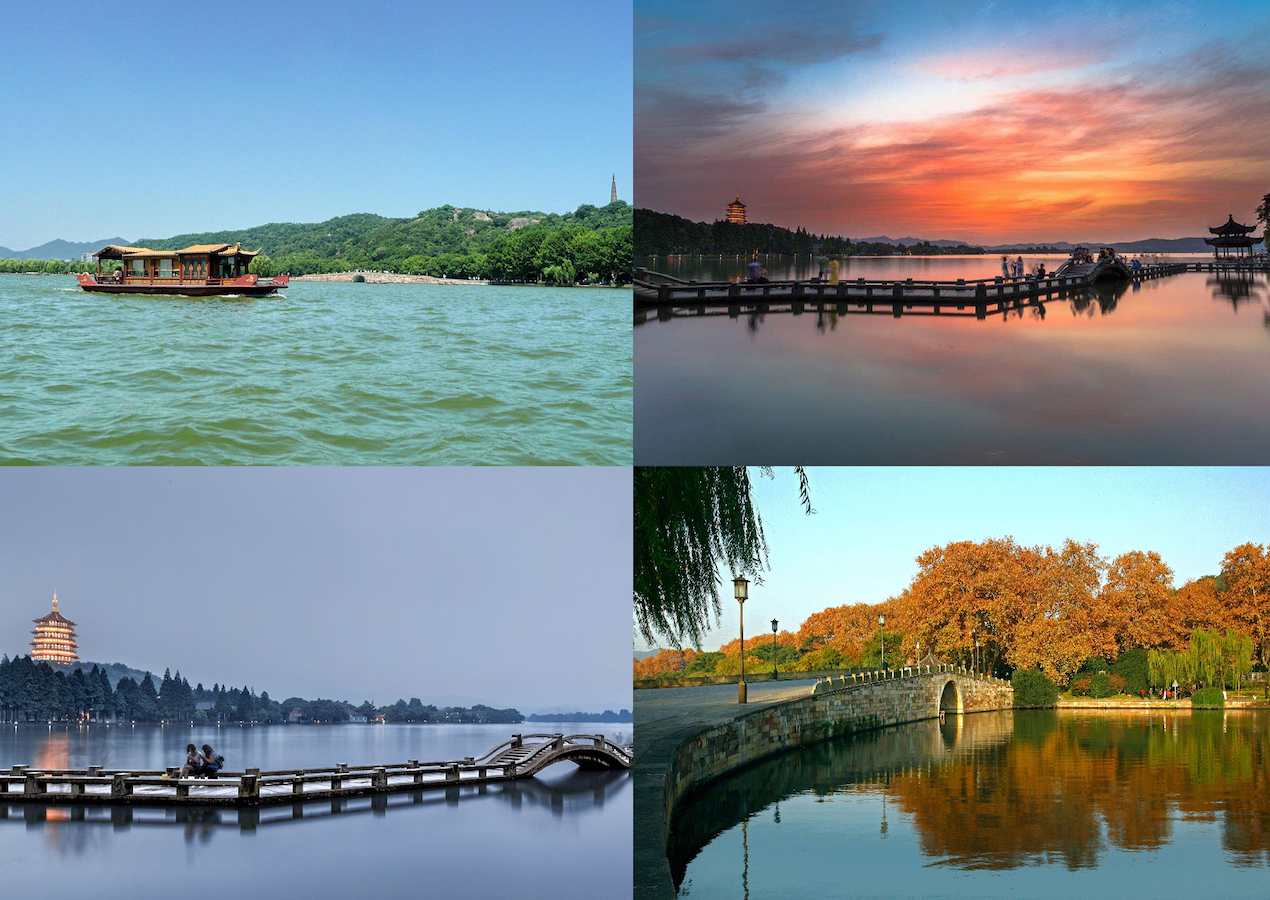
With a lake area of 6.38 square kilometers, the West Lake is surrounded by mountains on three sides, the outline of the lake is almost elliptical, the bottom of the lake is relatively flat, the average depth of the lake is 2.27 meters.
The West Lake Scenic Area has over 100 attractions and over 20 museums. There are more than 100 species of birds and more than 20 species of mammals in the scenic area. In addition, there are a total of 620 ancient trees over 100 years old in the scenic spot, of which 138 are first-class protected trees over 300 years old.
The West Lake scenic area has one mountain, two towers, three islands, three dimes, and five lakes as the basic pattern. Travelers can choose to hike, take a cruise, take a battery car, drive or ride a bike on the West Lake.

18. Shanghai Pudong Skylines

Pudong generally refers to the Pudong New Area, which brings together high-rise buildings such as the Oriental Pearl Tower, Shanghai International Convention Center, and the World Financial Center. The skyscrapers make people feel like being in an urban forest.
This is the premier financial business district at home and abroad and is now the most attractive place in Shanghai. Standing on the skyscrapers and overlooking the city, you will feel the modern sense of Shanghai. It is also a place where fashionistas gather and various international brands concentrate, and a good place for shopping.

19. Longmen Grottoes - World Heritage

Longmen Grottoes is the largest and most sculptural art treasure house in the world, having 2,345 existing cave statues, and more than 110,000 statues. Densely covered on the cliffs of the east and west mountains of Yishui, it is 1 km long from north to south.
Longmen Grottoes began to be excavated around 493 AD, experienced more than 10 dynasties, and built last for more than 1,400 years, making it the longest grotto in the world. It has shown a trend of Sinicization of grotto art and is a "milestone" of Chinese grotto art. After experiencing the construction of Tianzhu, Silla, Tocharo, Kangguo, and other countries, European patterns and ancient Greek stone pillars were discovered, which can be called the world's highest level of international grottoes.

20. Dunhuang Mogao Caves
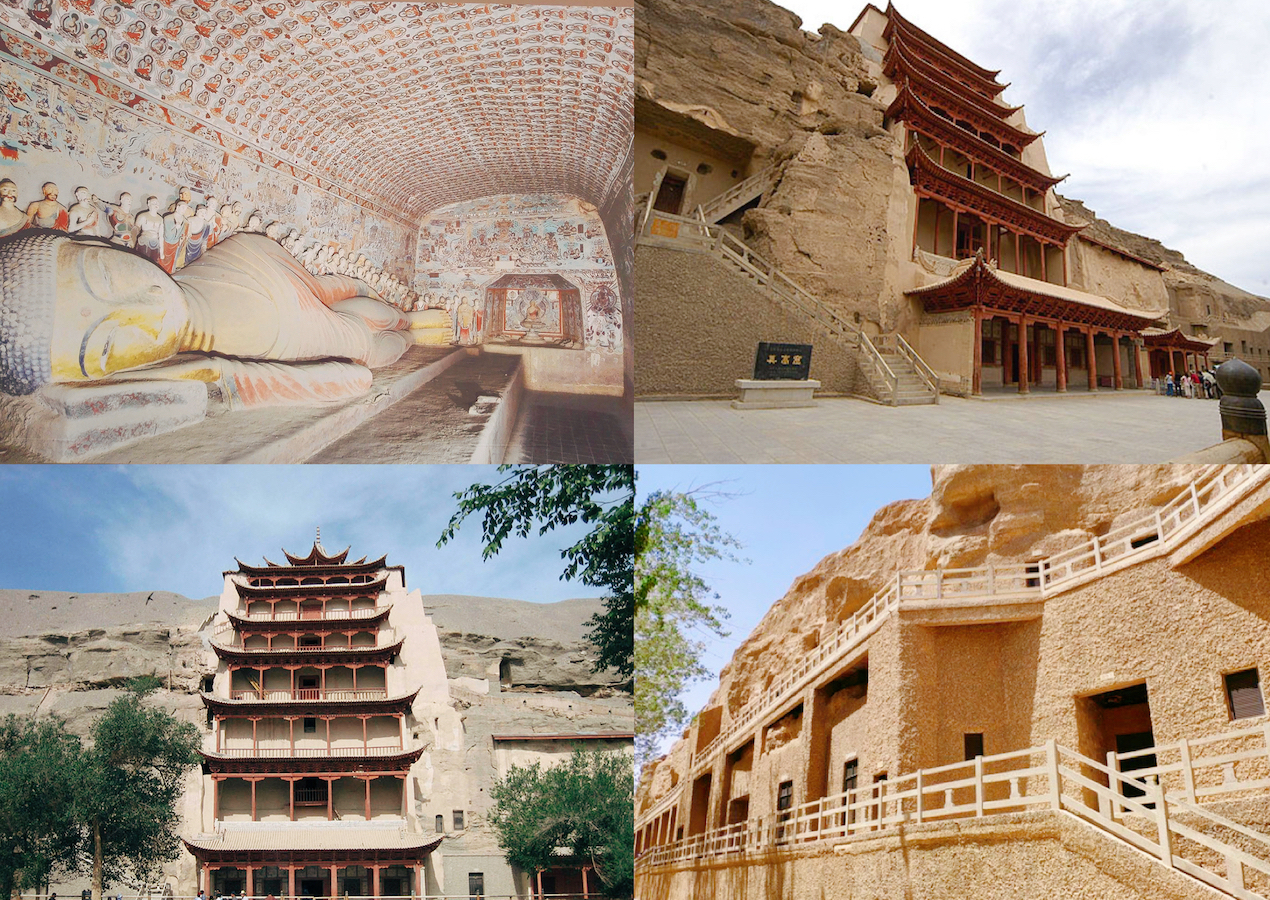
Mogao Grottoes, commonly known as the Thousand Buddha Caves, is located in Dunhuang, at the western end of the Hexi Corridor. It was built in the pre-Qin period (AD 351-394), and has been built in many dynasties and formed a huge scale. There are 735 caves, 45,000 square meters of murals, and 2,415 clay sculptures. It is the largest and most abundant Buddhist art place in the world.
The scenic area is composed of two parts: Mogao Grottoes Digital Exhibition Center and Mogao Grottoes, with a large number of murals, grottoes, cultural relics, etc. There are statues of Buddha and flying apsaras everywhere in the cave. There are nine-story sitting statues and small Bodhisattvas measuring more than ten centimeters. In addition, you will find numerous bodhisattvas with different shapes.
Note: No photos can be taken inside the Mogao Grottoes. Mobile phones and cameras can be free storage at the entrance.
Check our Dunhuang tour packages that include a visit to Mogao Grotttoes.

21. Kunming Stone Forest - World Heritage
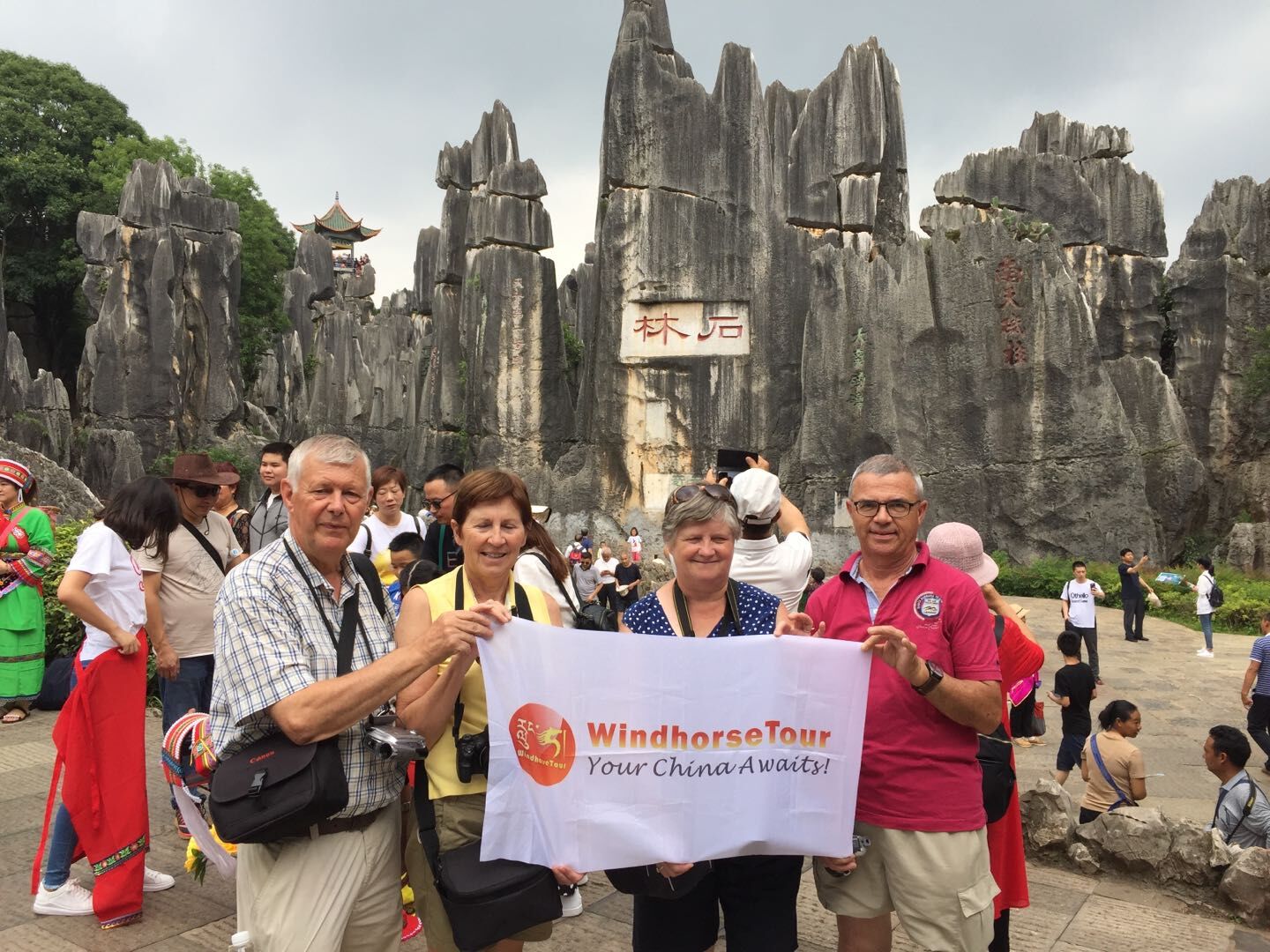
Stone Forest Scenic Area has been appraised as "World Geopark" and "World Natural Heritage Scenery" by the United Nations Educational and Cultural Sciences. About 300 million years ago, it was vast land. After a long geological evolution, extremely precious geological relics were finally formed, covering many types of karst landforms on the earth.
The stone forest preserves and exhibits the most diverse karst forms: the tall sword-shaped, column-shaped, mushroom-shaped, and tower-shaped limestone columns. In addition, there are caves, stalactites, dissolution lakes, natural bridges, cliff waterfalls, cone-shaped peaks, etc. Almost all karst forms in the world are concentrated here, forming a panoramic view of karst geology and landforms.
Check our Yunnan tour packages that include a visit to Kunming Stone Forest.

22. Dali Ancient Town
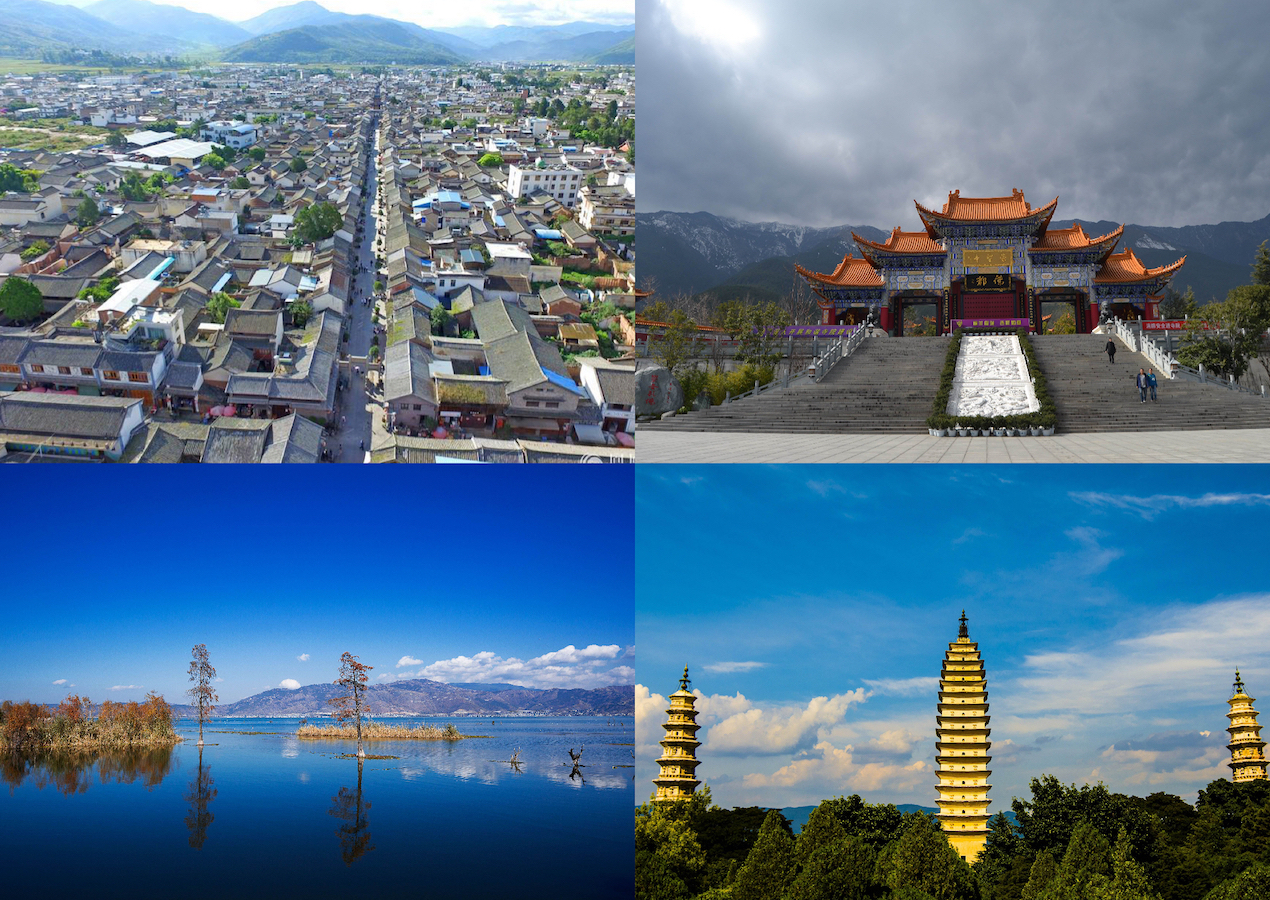
Dali ancient town was built in 1382 and covers an area of 3 square kilometers. It was the political, economic, and cultural center of Yunnan during the 500-year history of the Tang and Song dynasties. It carries Dali's history, culture, religious culture, and ethnic culture.
Dali ancient town has three main streets in the north-south direction and six alleys in the east-west direction. The houses in the town are all civil houses with tile roofs, and the streets are mostly made of bluestone slabs. Most streets have clear spring water flowing from Cangshan Mountain. A large number of buildings from the Ming and Qing Dynasties and the Republic of China are still preserved in the ancient town, with temples, academies, churches, and other ancient buildings dotted with it.

23.Tiger Leaping Gorge
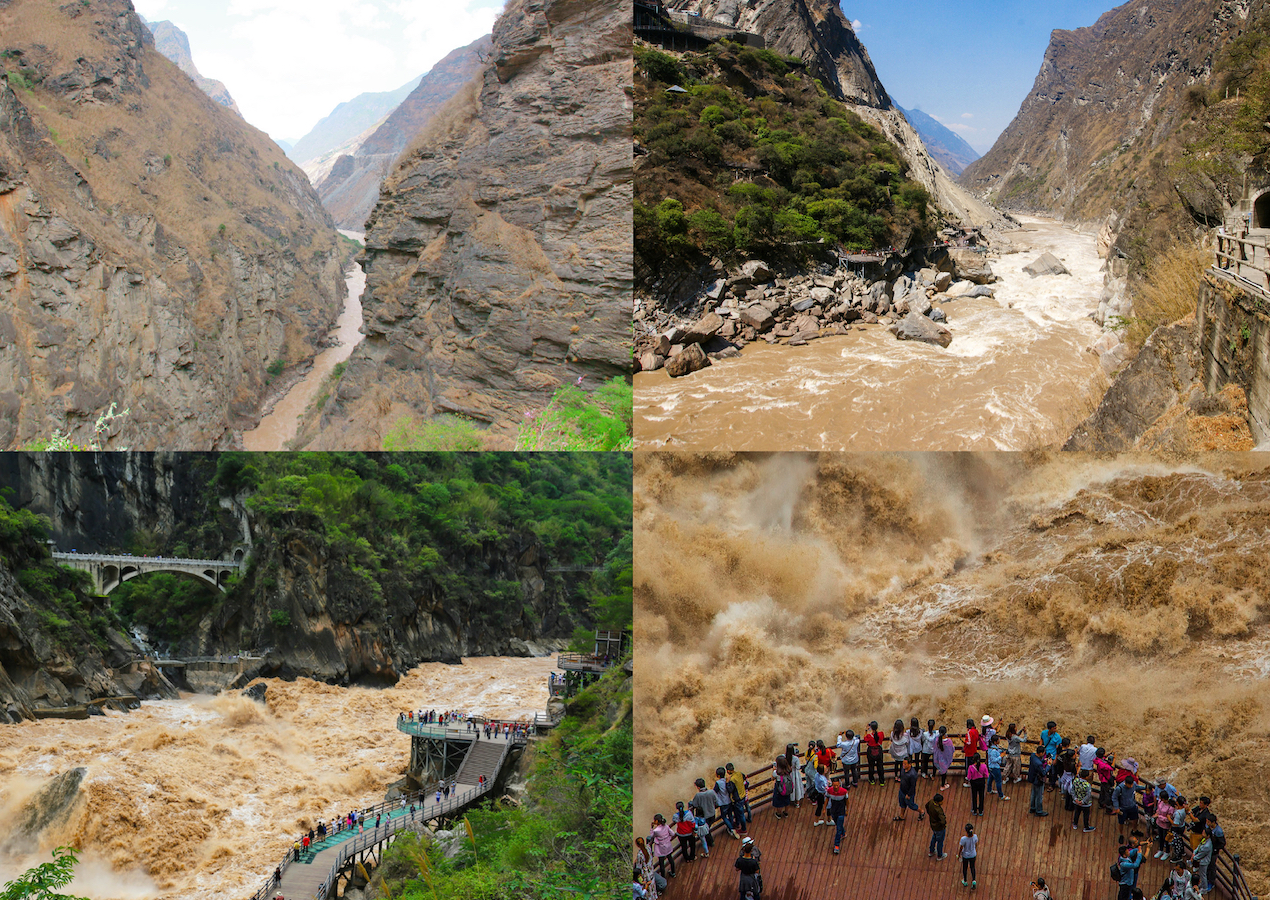
Tiger Leaping Gorge originates from the Jinsha River in Gladandong Snow Mountain in Qinghai province, the narrowest part of the river is only 30 meters. It is blocked by Jade Dragon Mountain and Haba Mountain. It is the first grand Canyon in the Yangtze River, and which is the canyon with the largest drop 3900 meters in the world with a total length of about 20 kilometers.
The conventional way of sightseeing is from the town of Tiger Leaping Gorge directly to the upper section of the Leaping Gorge. Then through the middle section, to truly appreciate the magnificent momentum of the Tiger Leaping Gorge. It‘s also a world-famous hiking resort, and outdoor enthusiasts are in an endless stream.

24. Yuanyang Rice Terraces - World Heritage
Yuanyang Rice Terraces are masterpieces left by the Hani people for generations. The people of all ethnic groups, dominated by the Hani nationality, use the special geography and climate to create the wonders of terrace farming civilization has the history of more than 1300 years, which is grand in scale and magnificent.
Yuanyang Rice Terraces are widely distributed. In addition to the three main core scenic spots (Laohuzui, Duoyishu, Bada), there are dozens of large and small terraces. The terraces cover thousands of acres, with different shapes and unique characteristics. Numerous terraced fields in the shadow of the vast forest and covered by the sea of clouds form a magical and magnificent landscape. Travel to Yuanyang, besides the magnificent sunrise and sunset of the terraces, you will also appreciate the unique customs of the Hani village.
Check out our Yuanyang Rice terraces tour for a photography trip.

25. Jiuzhaigou National Park - World Heritage
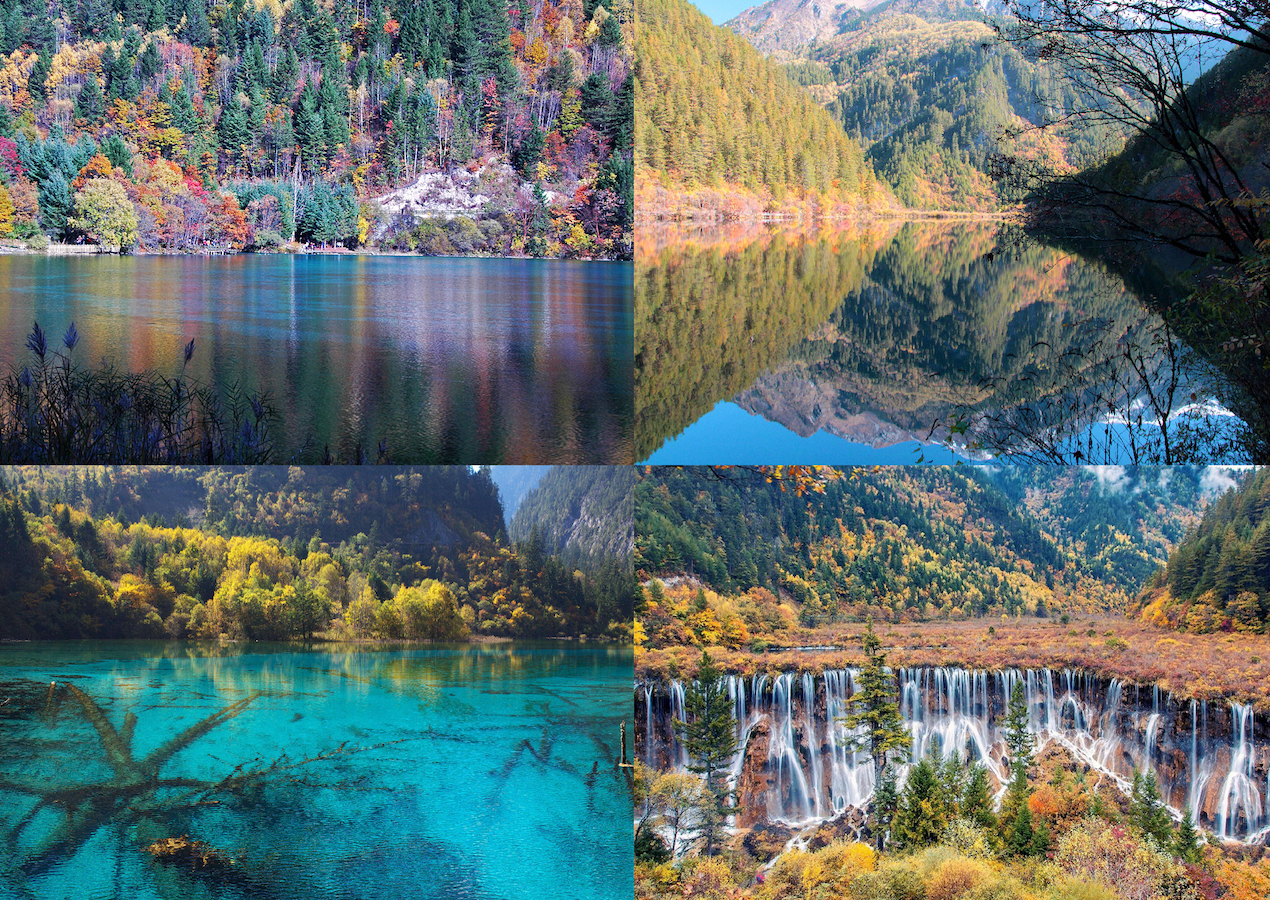
Jiuzhaigou National Park is a valley with a depth of more than 50 kilometers, with a total area of 64,297 hectares and a forest coverage rate of more than 80%. Jiuzhaigou is named after nine Tibetan villages and famous for its six wonders: emerald lakes, cascading waterfalls, colorful forest, snow peaks, Tibetan custom, and blue ice.
Jiuzhaigou is rich in animal and plant resources, with a wide variety of species. The primeval forests are all over the place, and more than ten rare and precious wild animals such as giant pandas live there. The lake water here is clear, and the bottom is clearly visible. Coupled with the cultural landscape composed of Tibetan wooden buildings, hanging prayer flags, trestle bridges, Tibetan customs, Jiuzhaigou is gorgeous in all seasons, just like a fairy tale.
Check out our Jiuzhaigou tours to find the one that best suits your interests.

26. Daocheng Yading Nature Reserve

Reputed as the last pure land on our planet, Yading Natural Reserve maintains the purity that is nearly extinct on the earth, with unique landforms and original natural scenery. This is one of the most complete and primitive alpine natural ecosystems in China.
Yading Nature Reserve has three holy mountains (Xiannairi, Yangmaiyong, Xianuoduoji) and surrounding rivers, crystal lakes (Milk Lake, Five-Color Lake, Pearl Lake), and alpine meadows (Chonggu pasture, Luorong Pasture). Travelers need to hike (partly road can be replaced by a sightseeing bus or horse-ride) to view those beautiful lakes and mountains. In addition, you will meet the pure and pious Tibetan people and feel the Tibetan culture.
Check out our Daocheng Yading tours to find the one that best suits your interests.

27. Mount Everest Base Camp
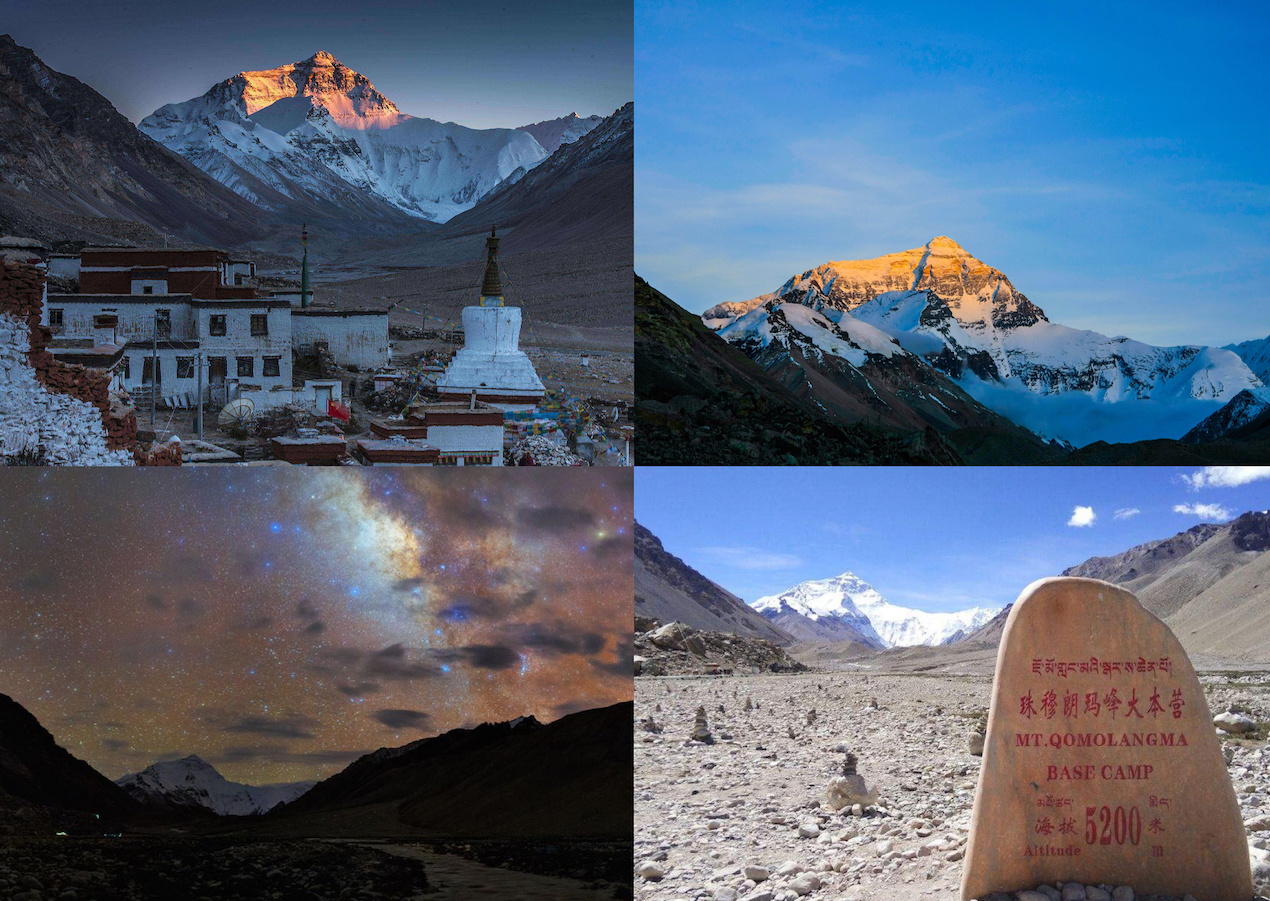
Mount Everest is the main peak of the Himalayas and the highest mountain in the world, located on the border between China and Nepal. Mount Everest Base Camp refers to the living area set up to view the environment of the core area of Mount Everest. It's one of the best locations to view the Everest peak with its splendid sunset.
There are tents for tourists at the Everest base camp. Most travelers will also choose to stay overnight in the Rongbuk Monastery near the base camp. Staying the night on the roof of the world, the air is thin, and what you look up at is the starry sky. This is definitely an excellent experience in life and a night that will never be remembered forever.
Check our Tibet Everest tour packages that include a visit to Mount Everest Base Camp (the north face).

28. Lhasa Potala Palace - World Heritage
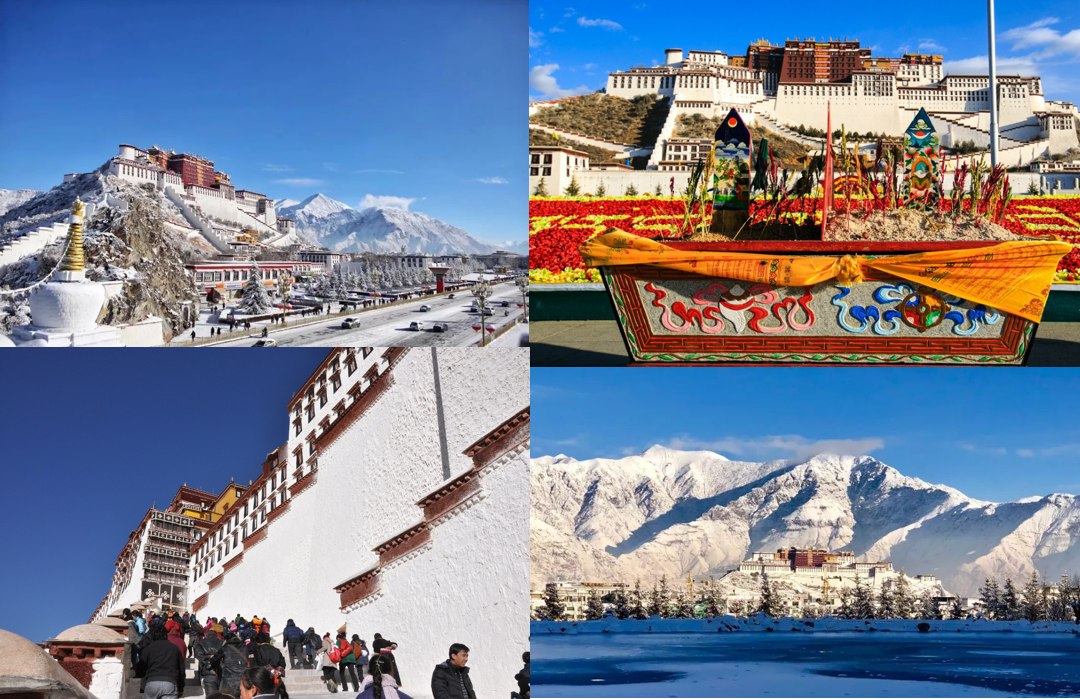
Potala Palace is a magnificent building with the highest elevation in the world, integrating palaces, castles, and monasteries. It was built in the 7th century and has a history of 1,300 years. Potala Palace is the holy place of Tibetan Buddhism, attracting countless pilgrims and tourists every year.
The Potala Palace is built on a hillside with overlapping buildings, it is the largest and most complete ancient palace and castle complex in Tibet. The main building is divided into the White Palace and the Red Palace. The highest Red Palace in the middle is an important place for religious ceremonies, and the surrounding White Palaces are mainly used by the Dalai Lama.
Make a life time travel to Tibet with one of our Tibet tour packages.

29. Leshan Giant Buddha & Mount Emei
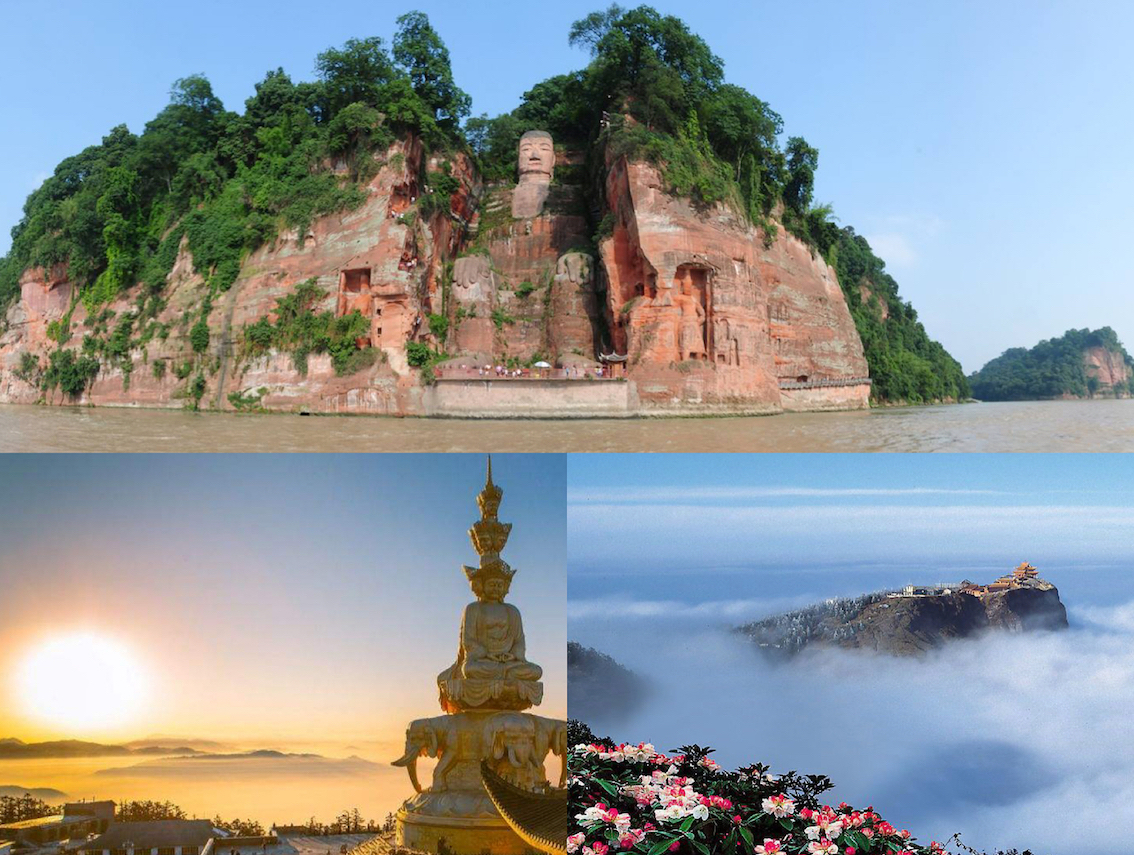
Leshan and Emei city are historical and cultural cities, and can be reached to each other 30 minutes by car.
Leshan Giant Buddha was built between AD 713-803, which lasted about 90 years. The giant buddha is a seated Maitreya Buddha with a height of 71 meters. It is the largest carved stone statue on a cliff in China. Travelers can choose to hike to observe the giant Buddha up close or take a boat to see the Big Buddha from a distance and get a panoramic view.
Mount Emei is a famous Buddhist mountain and the dojo of Samantabhadra. The numerous temples in the mountain make it full of the breath of Buddha. The best experience would be reaching to the top and overlooking the Golden Summit. Travelers can also hike in the half mountain to view the quiet mountain, stream, pavilion, etc.
Check out our Mount Emei & Leshan for a pilgrim trip.

30. Hongkong Victoria Harbour

Hong Kong Victoria Harbour is one of the three great natural harbors in the world. The name of Victoria Harbour comes from Queen Victoria of England. It has been influencing the history and culture of Hong Kong and leading the economic and tourism development of Hong Kong. It is one of the keys for Hong Kong to become an international metropolis.
It's a good choice to take a sightseeing boat to enjoy Hong Kong's scenery. The lights are shining at night, and a large-scale light show is staged every night at 20:00 pm. Here is also the main venue for fireworks displays in Hong Kong. During important festivals or major events, grand fireworks performances will be held here.


